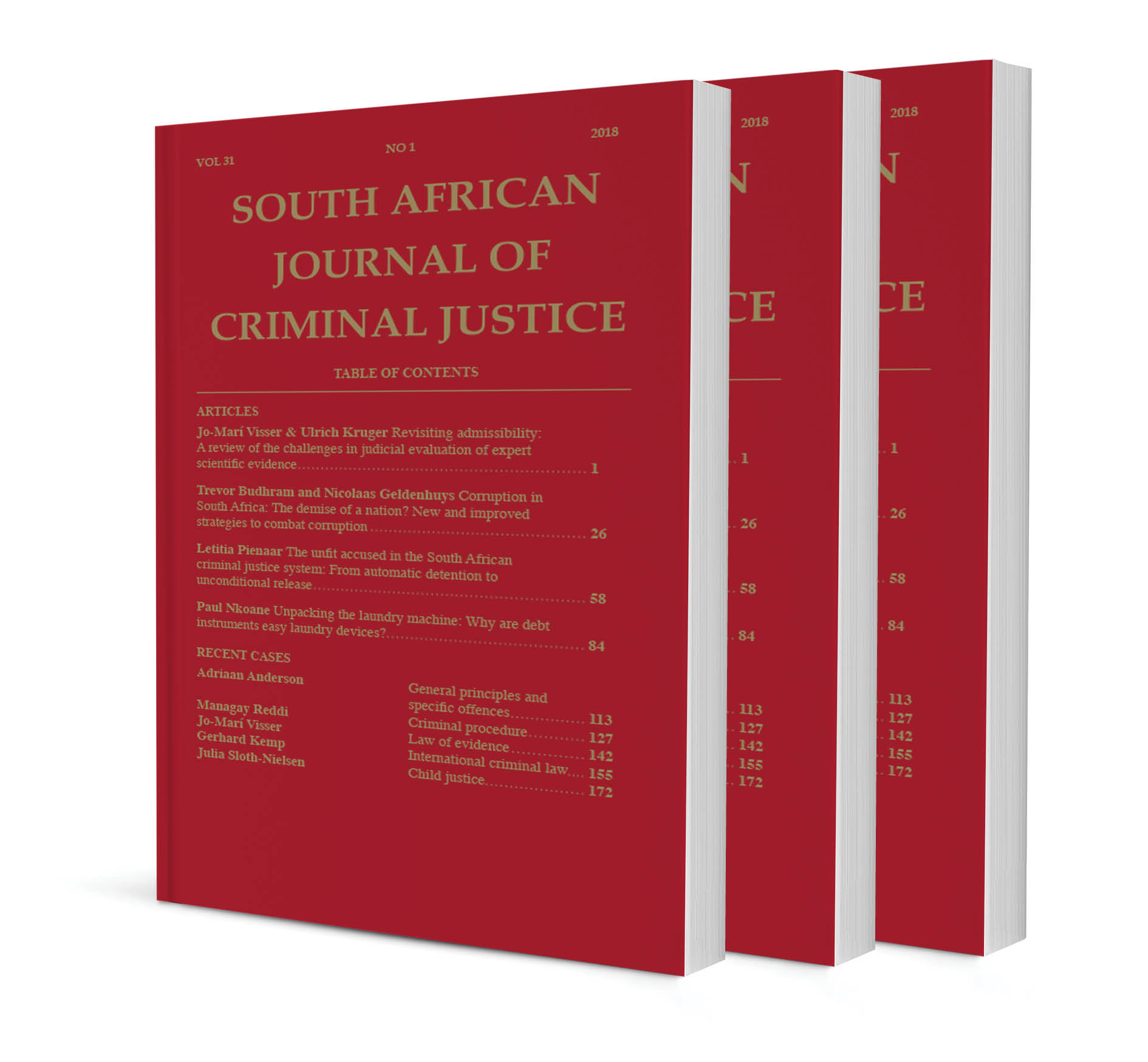Sentencing, human rights and the courts in Namibia: A consideration of S v Gaingob 2018 (1) NR 211 (SC)

Sentencing, human rights and the courts in Namibia: A consideration of S v Gaingob 2018 (1) NR 211 (SC)
Author: Nicole Januarie & Kennedy Kariseb
ISSN: 1996-2118
Affiliations: B Juris LLB LLM (Namibia); Legal Practitioner of High and Supreme Court of Namibia, Chief Legal Officer: High Court of Namibia; BJuris LLB (Namibia) LLM LLD (Pretoria); Senior Lecturer, Department of Public Law, School of Law, University of Namibia
Source: South African Journal of Criminal Justice, Volume 37 Issue 2, p. 171 – 190
https://doi.org/10.47348/SACJ/v37/i2a1
Abstract
With the attainment of independence in 1990, Namibia’s criminal justice system underwent several reforms, notably the abolition of the death penalty and corporal punishment. Sentencing thus took a different direction with fines, direct imprisonment and/or suspended sentences in part or whole, periodical imprisonment, declaration as a habitual criminal and committal to an institution, as the main sentencing formulae. Accordingly, the length of imprisonment for offenders may be determined as a result of legislative directives or as an exercise of judicial discretion. In its simplistic form, and as this article shows, the old case of S v Zinn 1969 (2) SA 537 (A), which the Namibian courts have adopted, proposes that the court has to look at the offender, the crime and the interest of society when proposing a balanced sentence for an offender. However, the influence of human rights, which was ushered in by a new constitutional framework, now also strongly affects the courts’ sentencing approach anchored in the Zinn triad. To this end, in S v Gaingob 2018 (1) NR 211 (SC) and Gariseb v S (P8/2015) [2024] NASC 8 (28 March 2024), the Namibian Supreme Court supplemented the principles of sentencing by introducing new reforms. Using a qualitative approach based on an anecdote of prevailing case law, this article found that despite concerted efforts towards a unified holistic sentencing approach by the courts, there exists several implications brought about primarily by the Gaingob decision and that there may be a need to address these gaps. Consequently, this article proposes several reforms that can possibly be considered in Namibia’s criminal justice system to rectify and clarify the challenges Gaingob and Gariseb pose for our courts and legal practice on a day-to-day basis.